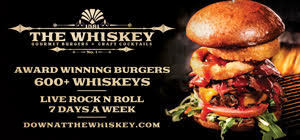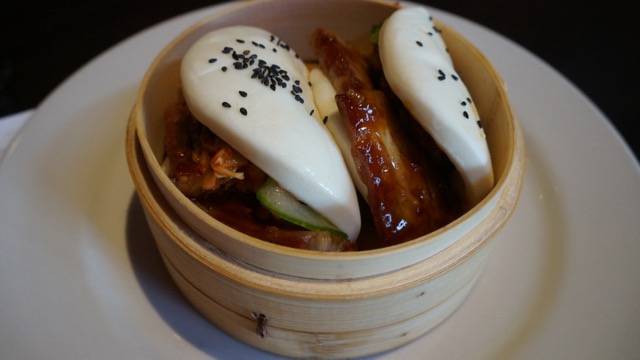
Bao are big.
They’re suddenly everywhere. Well, OK, that’s an exaggeration, but they’re showing up on enough menus to declare them an honest-to-Buddha trend. In the past week, I’ve eaten at two restaurants themed on the steamed buns: Bao in Ft. Lauderdale and Baoery, an Asian gastropub in downtown Orlando’s Thornton Park. The latter, from from chef Greg Richie and Thornton Park Restaurant Group, which also owns the nearby Soco, replaced Cityfish.
But why bao now? Part of the proliferation, I’m sure, is that the dining public enjoys exotic foods, especially those that aren’t too adventuresome. Asian dishes are particularly popular, and anything associated with street food is extra attractive. Bao are small but filling, and they can usually be gotten for a low price even as the restaurant selling them can claim a good profit margin.
And they can be pretty damn tasty, too.
So what is a bao? Bao, pronounced like the front of a ship, is, to put it simplistically, steamed dough filled with meat or vegetables. It may be in the form of a bun with the fillings hidden inside, or flattened and folded so that it resembles a puffy taco shell. It’s basically white bread dough, steamed instead of baked, so there is no browned crust, and the texture is doughier and moist. You’ll find the bun type on many Chinese dim sum carts (usually with precious little meat inside). The puffy tacos are what you’ll find in places like Baoery.
You’ll have to look hard to find them, however. Despite the name, a clever homophonic that evokes the neighborhood in south Manhattan, there are few actual bao selections, four under the Black Belt Bao heading, plus an item here or there that may include a bao bun. (Similarly, Bao in Ft. Lauderdale had only five bao selections on its sushi and tapas heavy menu.)
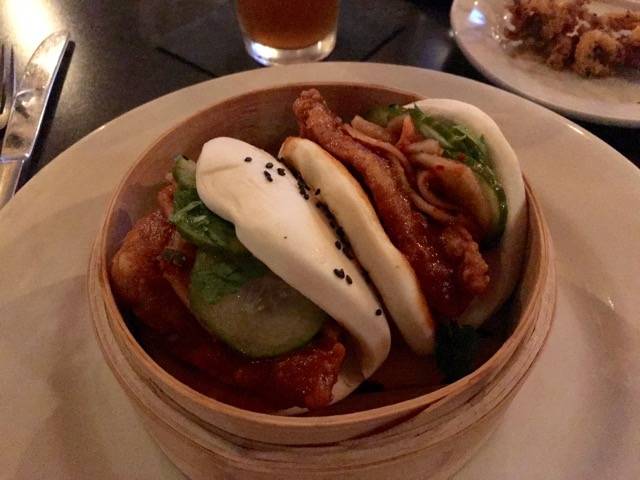
I had the Twin Dragons bao, which features a version of the Korean Fried Chicken that Richie serves at Soco, except without the bones. The two pieces, served in a small bamboo steamer, were stuffed with the crispy bits of chicken, which weren’t too terribly spicy, and some cool slices of radish and cucumber.
On another visit I had the Jade Emperor (pictured at top), which had roasted pork belly in the buns with a barbecue hoisin sauce and a bit of kimchi. The kimchi could have fermented a bit longer, but I enjoyed this one the most.
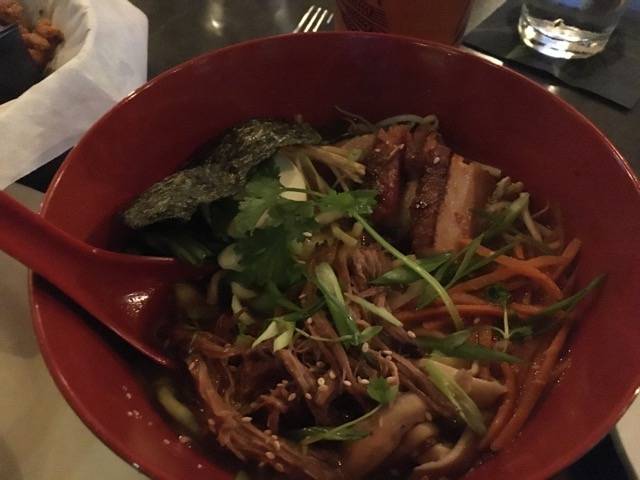
I also tried the Pork Belly Ramen, which had noodles in an evenly seasoned broth with a soft-boiled egg, carrots and scallions, and fresh herbs. A little pulled pork supplemented the delightfully fatty belly meat. Supposedly the ramen fad, which never really caught on in Central Florida, is over in the rest of the country, but I still haven’t had my fill.
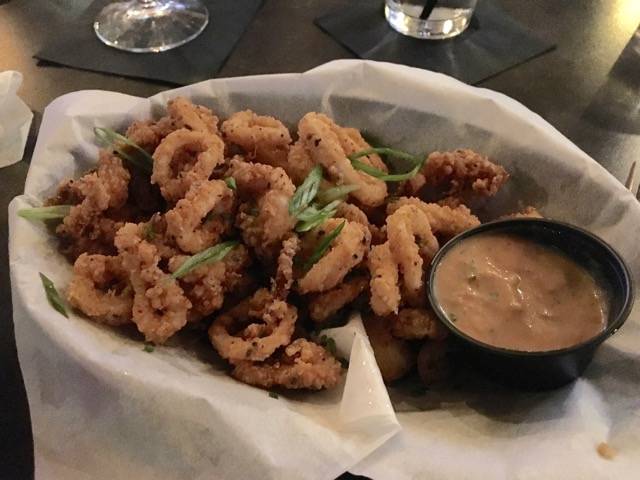
From the list of appetizers, or Small Plate, as they’re listed on the menu, my guest and I shared the Kung Pao Peanut Calamari, breaded and deep-fried squid with a coconut tinged peanut dipping sauce. The calamari were nicely done and the peanut sauce lifted the dish beyond the now mundane calamari appetizers that proliferate local menus.
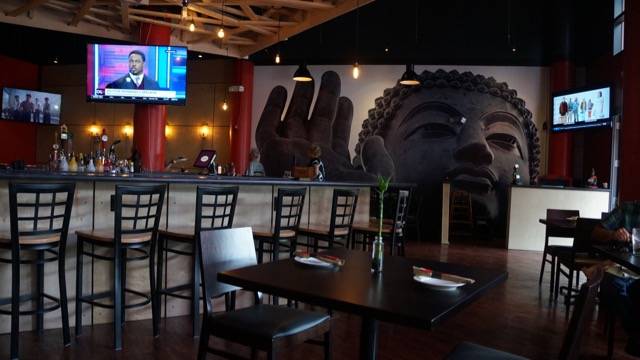
Renovations of the space included moving the bar, which had been located along one full wall, to the middle of the room, a good decision. There is a startlingly large wall mural of a statue of Buddha inside the front door. At first it appeared that Buddha has a pierced eyebrow, but it turned out to be an unfortunately situated emergency light. Other walls are painted a bright red.
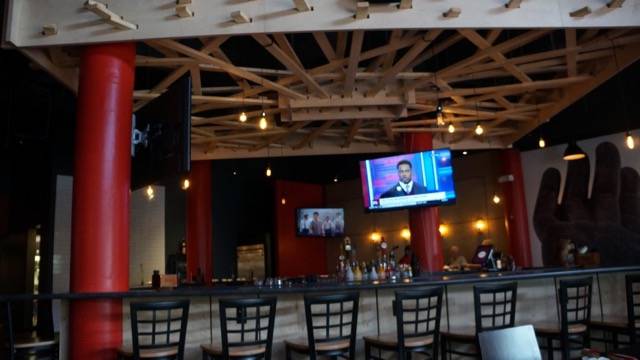
Somehow the space seems largely unfinished. Maybe it’s supposed to show monklike austerity. Above the bar, a scatter of lumber 2-by-4s invokes a mood that is the opposite of zen. Televisions hang about the room, some tuned to sports channels, others showing vintage kung fu movies.
Richie, who is listed on the menu as the restaurant’s Chairman as well as his official titles of executive chef and partner, has said that Baoery, along with Soco, are the two concepts he has always wanted to develop. Even more than Soco, Baoery makes use of his culinary background and his stints at Roy’s in Hawaii and Orlando and the Polynesian themed Emeril’s Tchoup Chop.
Soco, with its higher price point and nod to a fuller dining experience, isn’t the sort of place many people can — or necessarily want to — dine at regularly. Baoery, with a more casual vibe and approachable prices (nothing on the menu is over $15) will appeal to a younger crowd that likes to eat out often without breaking the bank or sacrificing the quality of food to do so.
Baoery is at 617 E. Central Blvd., Orlando. It is open for lunch and dinner daily. The phone number is 407-849-9779.


